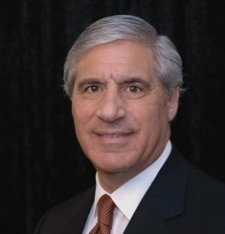A board of “constituents” often governs a university. The board could include political appointees, faculty appointees, student appointees and alumni appointees. These complex board structures, with shared governance provisions, make for very slow decision-making and often dysfunction. The competitive environment will not wait for boards to reach consensus – especially when consensus means unanimous. A much more nimble governance structure (public corporations do it with an average of nine directors) will have to evolve for traditional institutions to remain competitive.
Universities are businesses that have fiduciary obligations to taxpayers, lenders, investors, donors and workers. The complexity of these obligations requires sophisticated operational and functional expertise on the board – similar to a publically traded company. The tendency to favor constituents, who may have little experience running a complex enterprise, can often render the board ineffective as a fiduciary body. The desire for constituent fairness can result in inaction, retractions and suboptimal institutional decisions. Note the much-publicized reversal of board decisions at the University of Virginia after faculty objection; bringing into question fiduciary accountability.
Universities should follow the governance requirements and principles of listed companies. Like listed companies, universities often use public money and finance activities with public debt. The fiduciary obligations to the public are no different yet they can get pushed aside by constituent interests. As the Securities and Exchange Commission ratchets up its enforcement of university bond issues, best practices in governance will be expected. And those best practices are well established in securities regulation and law.
A university bond issuer with a constituent board would be well served to name a subset of board members, familiar with securities law and obligations, to make fiduciary decisions that affect outside interests. This “fiduciary board” would be charged with decisions and oversight of obligations and commitments to outsiders who provide funding or capital – governments, bondholders, donors, banks, and investors. The full “constituent board” can continue to make decisions and oversee how the university is meeting its mission. However, the accountability for balancing the mission with the money should be clearly delineated.
Finally, a word on shared responsibility. When a board contains constituent representatives, it is imperative that such board members act in the best interests of the university. This is easier said than done because, for the most part, these members are appointed or elected by their constituents. A healthy governance structure and operation will find a way to take the best information from constituent members while at the same time ensuring they serve with accountability to the institution. The future sustainability of traditional universities will likely depend on being competitively innovative – and competition does not wait for unanimous decisions at the board level.
******************
The five blog posts in this series represent the themes that Right Advisory LLC believes, based on four years as contract CFO/CAO on assignment to turn around finances for a major traditional university, boards will have to address as they position their institutions for the future of higher education. Each theme will have different attributes and aspects for each institution. A strategy tailored to the specific university would have to be developed.
Robert M. Tarola, CPA, CGMA
President
Right Advisory LLC

